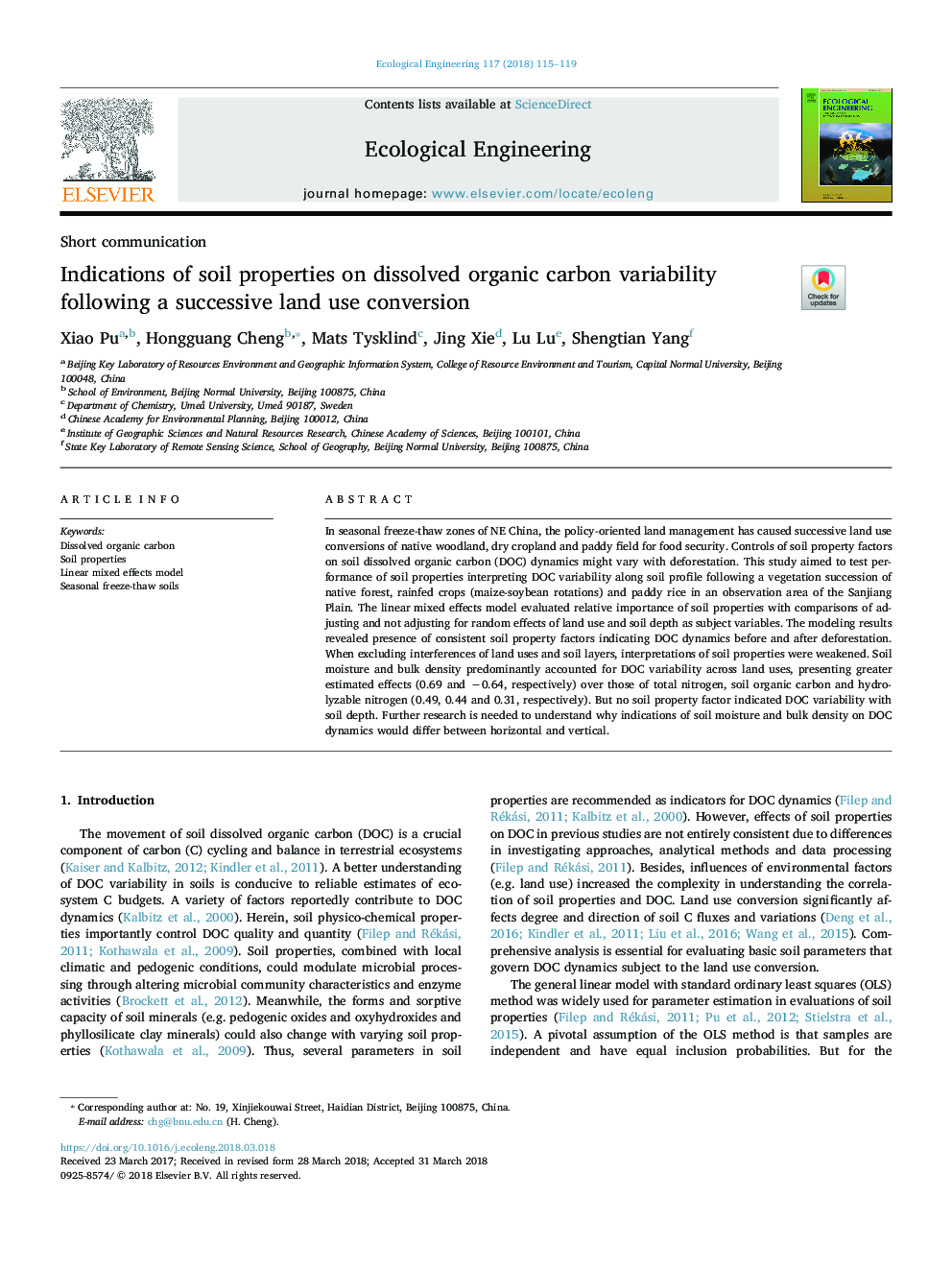| Article ID | Journal | Published Year | Pages | File Type |
|---|---|---|---|---|
| 8847879 | Ecological Engineering | 2018 | 5 Pages |
Abstract
In seasonal freeze-thaw zones of NE China, the policy-oriented land management has caused successive land use conversions of native woodland, dry cropland and paddy field for food security. Controls of soil property factors on soil dissolved organic carbon (DOC) dynamics might vary with deforestation. This study aimed to test performance of soil properties interpreting DOC variability along soil profile following a vegetation succession of native forest, rainfed crops (maize-soybean rotations) and paddy rice in an observation area of the Sanjiang Plain. The linear mixed effects model evaluated relative importance of soil properties with comparisons of adjusting and not adjusting for random effects of land use and soil depth as subject variables. The modeling results revealed presence of consistent soil property factors indicating DOC dynamics before and after deforestation. When excluding interferences of land uses and soil layers, interpretations of soil properties were weakened. Soil moisture and bulk density predominantly accounted for DOC variability across land uses, presenting greater estimated effects (0.69 and â0.64, respectively) over those of total nitrogen, soil organic carbon and hydrolyzable nitrogen (0.49, 0.44 and 0.31, respectively). But no soil property factor indicated DOC variability with soil depth. Further research is needed to understand why indications of soil moisture and bulk density on DOC dynamics would differ between horizontal and vertical.
Related Topics
Life Sciences
Agricultural and Biological Sciences
Ecology, Evolution, Behavior and Systematics
Authors
Xiao Pu, Hongguang Cheng, Mats Tysklind, Jing Xie, Lu Lu, Shengtian Yang,
